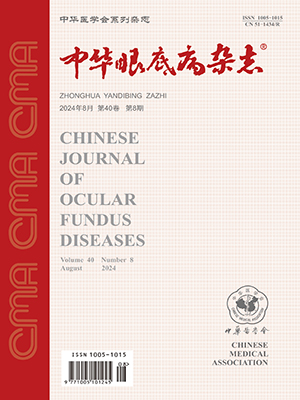Objective To observe the effect of intraocular pressure(IOP)rapid fluctuations on rat ocular hemodynamics. Methods SD rat model with IOP rapid fluctuations was established. The IOP was decreased from 12 mm Hg (1 mm Hg=0.133 kPa) to 0 mm Hg within 1 s. 2 minutes later, the IOP was increased from 0 mm Hg to 12 mm Hg within 1 s. The anterior segment photos of rats were taken by slit lamp image analysis system when IOP at 12 mm Hg and 0 mm Hg, while the iris vessels diameter (VD) was measured. The peak systolic velocity (PSV), end diastolic velocity (EDV), mean velocity (MV), resistant index (RI), pulsatility index (PI) and VD of rats central retinal artery (CRA) and central retinal vein (CRV) were detected and analyzed using color Doppler ultrasonography before and 5, 10, 20, 60s after IOP fluctuations. Results The iris VD was (28.30 plusmn;5.80) or (59.80 plusmn;6.40) mu;m when the IOP was 12 or 0 mm Hg, respectively. Compared with each other, the difference was statistically significant (t=8.98, P<0.01). When the IOP decreased rapidly, the VD of iris, CRA and CRV expanded immediately; PSV, EDV and MV increased immediately, then decreased slowly; RI and PI decreased immediately. The differences among different periods were statistically significant (P<0.01). The change magnitudes of CRA were bigger than those of CRV. Conversely, when the IOP increased rapidly, the VD of iris, CRA and CRV reduced immediately; PSV, EDV and MV decreased immediately; RI and PI increased immediately. The differences among different periods were statistically significant (P<0.01). Conclusion IOP rapid fluctuations can induce dramatic fluctuation of rat ocular hemodynamics.
Citation: 谢茂松,郑永征,刘新秀,徐国兴. Intraocular pressure rapid fluctuation affects rat ocular hemodynamics. Chinese Journal of Ocular Fundus Diseases, 2011, 27(5): 458-461. doi: Copy




